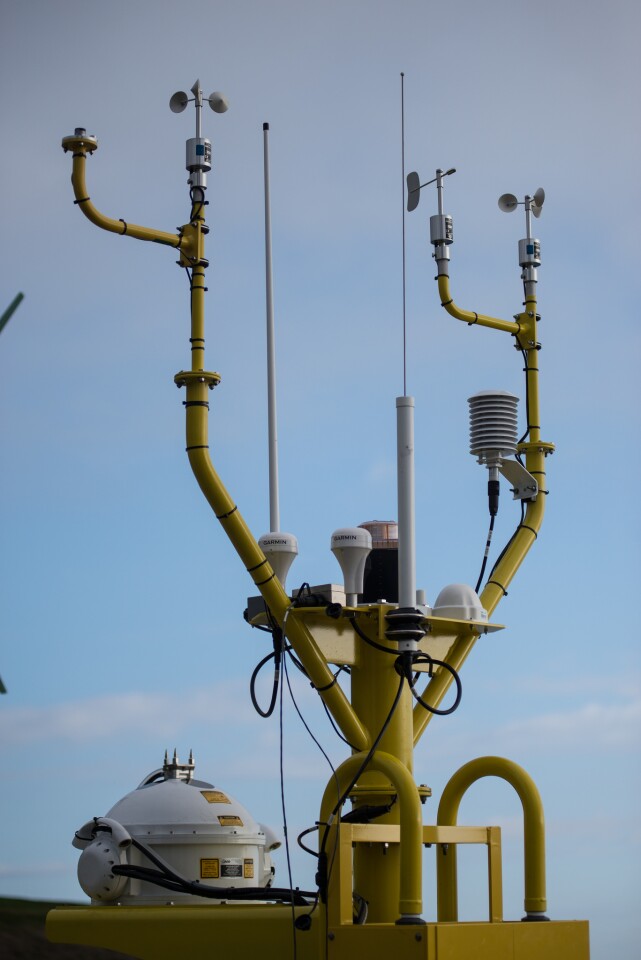Offshore wind power in the United States is nowhere close to meeting the potential this renewable energy form has to offer. There are a myriad of reasons why, including lack of information on energy-harnessing possibilities at specific sites. The US Department of Energy’s Pacific Northwest National Laboratory (PNNL) is looking to change this, by dropping two very advanced data-collecting buoys into coastal waters.
The two buoys, each weighing 20,000 lb (9,072 kg) and worth US$1.3 million, are finishing up testing by PNNL in Washington State’s Sequim Bay. Plans call for them to be split up in November for up to a year, with one heading to waters off Coos Bay, Oregon, while the other will turn up offshore of Virginia Beach, Virginia.
Technological focus of the buoys
The advanced meteorological and oceanographic equipment present on the buoys, according to PNNL, will be used by researchers to better understand "air-sea interactions and their impact on how much wind energy a turbine could capture at particular offsite locations." This includes knowing how potentially powerful the offshore winds really are for a typical wind turbine’s blades, that sit up to 600 feet (183 m) above the surface when in the water.

Data collection technology on board the buoys includes light detection and ranging (LIDAR) devices that measure both wind speed and direction at multiple heights. These are joined by other onboard systems recording things such as air/sea surface temperatures, barometric pressure and more. Acoustic Doppler sensors will also probe subsurface ocean currents.
The buoys, purchased by PNNL from a Canadian manufacturer, certainly aren’t the first instruments put to sea to measure ocean surface winds. Their unique calibrations, however, will help them in ways other data collection platforms aren’t set up to facilitate.
Wind energy certainly has strong potential for delivering cleaner power to American households, with one recent report suggesting nearly 17 million typical homes could be supported by the equivalent of over 54 gigawatts of electricity. Questions remain, though, on issues like the environmental impact of giant turbines at sea, and what sort of support infrastructure would be needed to get all of this power to shore.
Source: PNNL






